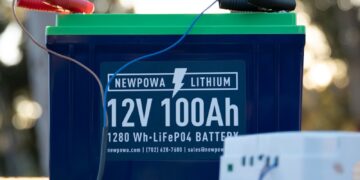How Solar, Wind, and Batteries Are Reshaping the U.S.—and the World
A Global Turning Point—And America at the Crossroads
In 2022, the U.S. passed what came to be called the “Big Beautiful Bill”—a sweeping piece of legislation that unlocked hundreds of billions of dollars in tax credits, incentives, and investments for clean energy. This wasn’t just a policy win—it was a signal to the world: The U.S. is finally serious about transitioning off fossil fuels.
Fast forward to the summer of 2025, and the results are… complex.
We are seeing record growth in solar, wind, and battery storage. But we’re also facing resistance—bureaucratic, cultural, and technological. As the U.S. tries to lead in the renewable revolution, the rest of the world watches closely. Will we rise to meet the promise—or stall under the weight of our own inertia?
☀️ The Solar Boom—And the Bottlenecks
Solar power is having a moment. According to the latest reports, more than 50% of new utility-scale generation in the U.S. in 2024 was solar. Rooftop solar is now a mainstream product, helped by community solar programs, energy-as-a-service models, and financing that removes upfront costs for homeowners and businesses alike.
But there are cracks:
- Interconnection delays: Solar developers are facing long waits to connect to an outdated grid.
- Permitting logjams: Local regulations vary wildly, slowing down adoption.
- Equipment shortages: Global supply chains are still fragile—especially for advanced inverters, transformers, and key solar components.
The good news? Costs continue to fall, and innovations in perovskite cells, agrivoltaics, and solar-storage hybrids are keeping the future bright.
💨 Wind Energy: Power in the Air, Headwinds on the Ground
Wind energy is surging, with new offshore projects gaining ground in places like the Gulf of Mexico and the Atlantic seaboard. Onshore wind farms are expanding in Texas, Iowa, and the Midwest.
Yet, the wind sector faces real challenges:
- Local opposition—often fueled by misinformation—slows project approvals.
- Transmission gaps make it hard to move wind power from rural areas to urban centers.
- Wild swings in state policy (hello Ohio, goodbye North Dakota) leave developers uncertain.
Still, with larger turbines, smarter controls, and rising public awareness, wind energy remains a central pillar of the clean energy mix.
🔋 Battery Storage—The Silent Revolution
The unsung hero of the renewable age? Batteries.
Thanks to the Big Bill, battery storage installations tripled between 2022 and 2024. Utilities are embracing them to flatten peak demand. Data centers, schools, and even shopping centers are building behind-the-meter battery systems to reduce demand charges and gain energy resilience.
New technologies—solid-state lithium, iron-air batteries, and thermal storage—are pushing beyond the limits of traditional lithium-ion. We’re not just storing power for a few hours anymore—we’re talking days of backup for communities.
Challenges remain:
- Rare earths and lithium sourcing are controversial and environmentally intensive.
- Battery recycling infrastructure is in its infancy.
- Fire safety standards are still being standardized and regulated.
But make no mistake: Energy storage is the backbone of a clean, reliable grid.
💥 Microgrids & Decentralization—Power to the People?
One of the most promising offshoots of the energy revolution is the rise of microgrids—local, islandable energy systems powered by solar, batteries, and even small wind or bioenergy.
- Military bases and hospitals are already converting to microgrids.
- Small towns in California, Texas, and Puerto Rico are piloting resilient, off-grid capable systems.
- Data centers and blockchain farms are increasingly building their own behind-the-meter generation to control costs and carbon.
As the national grid continues to strain under climate stress and demand growth, microgrids are emerging as both a climate adaptation and mitigation tool.
🇺🇸 America’s Energy Identity Crisis
Despite the progress, the U.S. faces a profound question: Are we really ready to lead the world in clean energy—or just subsidize it?
Some concerns we must confront:
- Grid reliability vs. climate goals: Are we building transmission fast enough to handle renewables?
- Permitting reform: Can we speed up clean energy without gutting environmental reviews?
- Equity gaps: Are underserved communities really benefiting from the clean energy boom—or being left behind again?
📈 The Economics: Green is Getting Cheaper—But Not Equally
Thanks to the bill’s incentives:
- Solar is now the cheapest electricity in history, per the IEA.
- Wind and batteries are approaching grid parity in most markets.
- Green hydrogen, geothermal, and carbon capture are attracting billions in VC and federal money.
But fossil fuel states—especially those dependent on coal or fracked gas—are seeing economic dislocation. Without workforce retraining and transition plans, we risk a new kind of energy divide—this time, between the clean and the left-behind.
🌐 The World Watches the U.S.
While Europe pushes aggressive net-zero policies and China dominates solar manufacturing, the U.S. is uniquely positioned as the innovation engine of the clean energy world. We’re home to the most ambitious startups, the boldest climate VCs, and the largest consumer economy.
But the global south is watching too: Will the U.S. help export clean tech affordably, or protect its markets with tariffs? Will we truly lead—or just compete?
💚 The Road Ahead—Policy, Purpose & the Planet
We’re at a moment of radical possibility. The Big Beautiful Bill cracked open the clean energy floodgates. Now the question is: Do we build wisely, equitably, and urgently—or get tangled in our own contradictions?
As climate risks mount and economic pressures shift, one thing is clear: sustainability is no longer a niche—it’s the new baseline.
At EcoBusinessNews.com, we’ll be tracking the deals, the data, and the decision-makers. If you’re a developer, policymaker, innovator, or just a dreamer: Now is your moment to lean in.



















